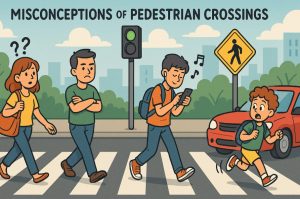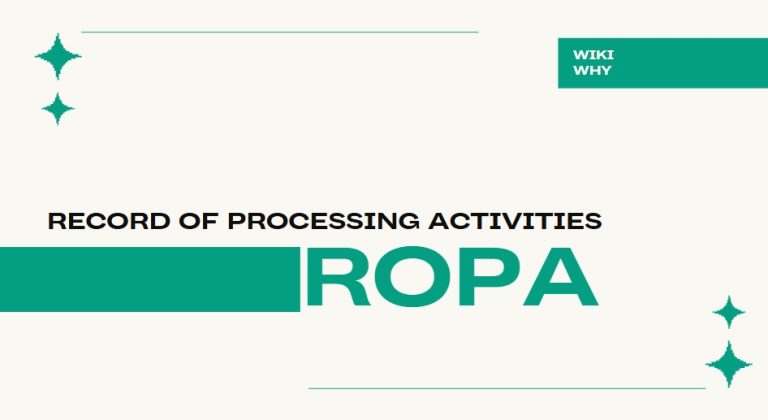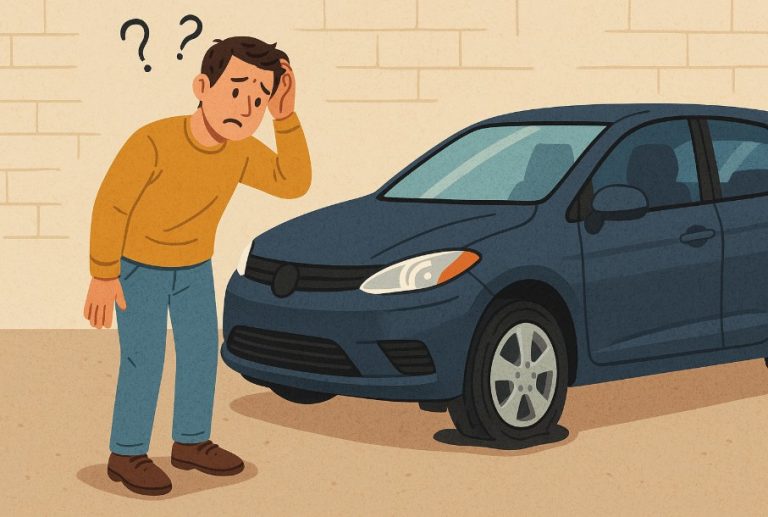Why is a Toucan Crossing Different From a Puffin Crossing?
Understanding the differences between various pedestrian crossings in the UK is crucial for both road users and pedestrians. Among the most commonly confused types are the toucan and puffin crossings.
While they may seem similar at a glance, these crossings serve different functions and are designed with distinct features to enhance safety.
Recognising how each operates can help you make better decisions whether you’re walking, cycling or driving.
This blog will guide you through what defines a toucan and a puffin crossing, how they function within the UK’s road network, where you’ll usually find them, and how they help reduce accidents.
By the end, you’ll clearly understand why a toucan crossing is different from a puffin crossing.
What Is a Toucan Crossing?

A toucan crossing is a type of controlled pedestrian crossing in the UK designed for both pedestrians and cyclists to use at the same time.
The name “toucan” is a play on words, “two can” cross, referring to the dual functionality. Unlike standard pedestrian crossings, toucan crossings have wider paths to accommodate cyclists alongside pedestrians without the need to dismount.
These crossings include traffic lights and push-button controls, typically featuring red and green cycle and pedestrian symbols.
Toucan crossings are part of the UK’s efforts to encourage active travel, making it easier and safer for people to walk or cycle.
Importantly, toucan crossings use intelligent sensors that detect waiting users, optimising traffic flow while reducing wait times. They’re commonly found near parks, schools, and shared-use cycle routes.
This makes them particularly useful in urban areas aiming to promote sustainable transport by creating safe spaces for non-motorised road users.
What Is a Puffin Crossing?
A puffin crossing, short for “Pedestrian User-Friendly Intelligent” crossing, is a more advanced version of the older pelican crossing. It is designed specifically for pedestrians only and includes features that improve safety and traffic efficiency.
Unlike pelican crossings, puffins don’t use flashing amber lights. Instead, they operate with a standard red, amber, and green traffic light system.
What sets puffin crossings apart is their use of smart sensor technology. These sensors detect when a pedestrian is waiting and also monitor if they’re still crossing.
If someone is walking slowly across the road, the system can hold the red light for vehicles longer, ensuring a safer crossing experience.
The pedestrian lights on a puffin crossing are positioned at eye-level, right next to the person waiting.
This placement is more intuitive and reduces confusion about when it’s safe to cross. Puffin crossings are especially beneficial in areas with high pedestrian footfall like city centres or outside shopping areas.
How Do Pedestrian Crossings Operate in the UK?

In the UK, pedestrian crossings are an essential part of the road system, regulated by traffic lights, road markings, and signage to ensure safety. These crossings are broadly categorised into controlled and uncontrolled crossings.
Controlled crossings, such as pelican, puffin, toucan, and pegasus crossings, have traffic lights or signals that manage vehicle and pedestrian movement.
Uncontrolled crossings like zebra crossings do not use traffic lights. Instead, they rely on drivers giving priority to pedestrians already on or about to step onto the crossing.
Among the controlled crossings, puffin and toucan crossings incorporate advanced technology like motion detectors and sensors to optimise timing.
The UK Highway Code outlines specific rules for how pedestrians and drivers should behave at these crossings.
For instance, drivers must always stop when traffic lights are red and allow pedestrians to cross safely. The use of clear markings and intelligent systems makes UK crossings among the safest in the world.
Where Are Puffin and Toucan Crossings Typically Found?
The placement of puffin and toucan crossings is carefully planned by local councils to suit the needs of the surrounding area. These crossings are more likely to be found in locations where pedestrian or cyclist movement is high and traffic needs to be managed safely.
Puffin Crossings Are Commonly Found
- In busy urban centres
- Outside schools and hospitals
- Near public transport stations
- In high footfall shopping districts
Toucan Crossings Are Typically Found
- Along designated cycle routes
- Near parks and recreational areas
- At intersections with high pedestrian and cyclist use
- Close to schools that promote cycling and walking
These locations are selected not just for safety, but also to promote sustainable travel habits.
The presence of sensors and intelligent signals helps accommodate varying pedestrian and cyclist behaviours, making the roads more adaptable to different users.
Who Has Priority at These Crossings?

At both puffin and toucan crossings, the rules of priority are clearly defined and regulated through traffic signal control.
Once the green pedestrian or cycle signal is displayed, all vehicles are required to stop, giving full priority to pedestrians or both pedestrians and cyclists, depending on the crossing type.
For puffin crossings, only pedestrians are allowed to cross, and vehicles must yield once the red light is active. Pedestrians must press the button and wait for the green man symbol before crossing. The intelligent sensors will extend the red light if someone is still crossing.
In contrast, toucan crossings allow both cyclists and pedestrians to cross side by side. Cyclists are not required to dismount and may remain on their bikes while crossing.
Drivers must stop when the signals turn red and must wait until the crossing is clear, ensuring safety for both cyclists and pedestrians.
Following the light signals strictly ensures everyone’s safety and promotes smooth traffic flow in both directions.
Why is a Toucan Crossing Different from a Puffin Crossing?
Although both crossings use smart technology and traffic signals, toucan and puffin crossings differ in their core design and user intent.
Toucan crossings are dual-purpose, allowing both cyclists and pedestrians to cross, whereas puffin crossings are for pedestrians only.
Comparison Table: Puffin vs. Toucan Crossing
| Feature | Puffin Crossing | Toucan Crossing |
| Designed For | Exclusively for pedestrians, offering a safer and more focused crossing environment. | Designed for both pedestrians and cyclists, encouraging shared use and accommodating active travel options like cycling. |
| Signal Type | Uses pedestrian-specific visual signals (red and green man symbols) only. | Displays both pedestrian and bicycle symbols in red and green to indicate when it’s safe for either group to cross. |
| Signal Location | Positioned at eye-level beside the pedestrian for easy visibility while waiting to cross. | Positioned at eye-level or overhead to ensure visibility for both cyclists and pedestrians, especially in wider or more complex crossings. |
| Width | Standard footpath width, generally around 2–3 metres, suitable for one or two pedestrians walking side by side. | Wider crossing area, typically 3–5 metres or more, to comfortably allow both cyclists and pedestrians to cross simultaneously without dismounting. |
| Smart Sensors | Equipped with motion detectors and pedestrian presence sensors that adjust the light timing based on actual crossing behaviour. | Also features smart sensors that detect both cyclists and pedestrians to optimise crossing time and improve flow. |
| Cyclist Access | Cyclists are not permitted to ride across and must dismount if they wish to use the crossing alongside pedestrians. | Cyclists are legally allowed to ride across without dismounting, making it more convenient and promoting safer integration into the traffic system. |
These differences make toucan crossings more versatile in areas where cycle routes intersect pedestrian zones. Puffin crossings, however, offer a more controlled and focused experience for pedestrian safety alone.
How Do Puffin and Toucan Crossings Improve Road Safety?

Both puffin and toucan crossings play a significant role in enhancing safety for non-motorised road users by using sensor-based intelligent traffic management systems.
These systems detect the presence and movement of pedestrians and cyclists, ensuring enough time is provided for safe crossing.
Safety Features Include
- Motion sensors that monitor pedestrian movement and extend crossing times if needed, preventing lights from changing too quickly.
- Audible signals for visually impaired users, providing beeping sounds or tactile indicators for safe navigation.
- Clear visual prompts with pedestrian and cyclist icons, ensuring users understand where to wait and when to cross.
- Timed signals that balance traffic flow and safety, dynamically adjusting crossing times to prevent congestion.
In addition, the strategic placement of these crossings in high-traffic zones helps reduce collisions and near-miss incidents.
The separation of user types also minimises the risk of conflict between different groups, such as cyclists and drivers or pedestrians.
These advanced features not only reduce the chances of accidents but also boost public confidence in using sustainable modes of transport like walking and cycling.
What Are the Advantages of Cycle-Friendly Crossings?
Cycle-friendly crossings like toucan crossings are essential to supporting the UK’s push towards greener and more active travel.
These crossings allow cyclists to stay on their bikes, reducing interruptions to their journey and maintaining traffic fluidity.
By including cyclists in the traffic control system, toucan crossings reduce the temptation to cross unsafely, such as weaving through traffic. Cyclists are more likely to obey signals when they feel included in the design of the road system.
Moreover, these crossings encourage families, children, and less confident riders to use cycling routes more safely.
When cyclists are catered for properly, the roads become more inclusive, promoting environmental benefits and easing congestion on roadways. These advantages help local authorities create safer and healthier communities.
What Are the Common Misconceptions About Pedestrian Crossings?

Despite being common, pedestrian crossings in the UK are often misunderstood. Misinterpretation of signals and design features can lead to risky behaviour from both pedestrians and drivers.
Common Misconceptions
- “All crossings are the same”: Many people assume zebra, puffin, pelican, and toucan crossings function identically, but each has unique signals, rules, and priorities for pedestrians and drivers.
- “Cyclists can use any crossing”: While some cyclists ride across any crossing, only toucan crossings legally allow them to do so without dismounting. Other crossings require them to walk their bikes.
- “Flashing amber lights are always present”: Puffin crossings use sensors and do not have the flashing amber phase seen in older pelican crossings, leading to confusion among road users.
- “The green man means go immediately”: The green signal indicates it is safe to cross, but pedestrians should still check for approaching vehicles, especially in case of red-light violations.
Understanding these differences is vital for everyone’s safety. Clarifying these myths through public awareness and signage can lead to more responsible road behaviour.
Conclusion
Knowing the difference between a toucan crossing and a puffin crossing is more than just road theory. It’s about recognising how the UK’s road systems are evolving to support a wider range of users.
Toucan crossings offer a smart solution for areas with mixed traffic involving pedestrians and cyclists, while puffin crossings focus purely on pedestrian safety through intelligent design.
By understanding their unique features, signal systems, and placements, you’re better equipped to navigate these crossings confidently.
Whether you’re walking, cycling or driving, being informed about these distinctions helps create safer, more efficient roads for everyone in the UK.
FAQs About Toucan Crossing and Puffin Crossing
Can visually impaired pedestrians use toucan crossings safely?
Yes, toucan crossings are designed with audible signals and tactile paving to assist visually impaired users, though some critics argue puffin crossings offer better sensory cues due to nearside signals.
Why don’t all UK cities use the same types of pedestrian crossings?
Different areas have different infrastructure needs, foot traffic levels, and budgets. Local councils assess which crossing type is most suitable based on location and user safety.
Do traffic light timings vary between puffin and toucan crossings?
Yes, puffin crossings use smart sensors to adjust timing based on pedestrian movement, while toucan crossings consider both pedestrian and cyclist clearance times.
Is it legal for cyclists to ride across a puffin crossing?
No, cyclists must dismount at a puffin crossing as it is intended only for pedestrians. Only toucan crossings legally allow cycling across.
Are toucan crossings suitable for busy junctions?
Yes, they are particularly useful in areas with high foot and cycle traffic. Their design helps ease congestion and increase safety for multiple user types.
What happens if you cross during the red signal?
Crossing against the signal is illegal and dangerous. Enforcement varies, but fines can be issued in cases of non-compliance, especially where CCTV is used.
How does weather affect crossing sensor accuracy?
Extreme weather like heavy rain or fog can sometimes interfere with sensor readings, but modern crossings are equipped with advanced detection to minimise this risk.







